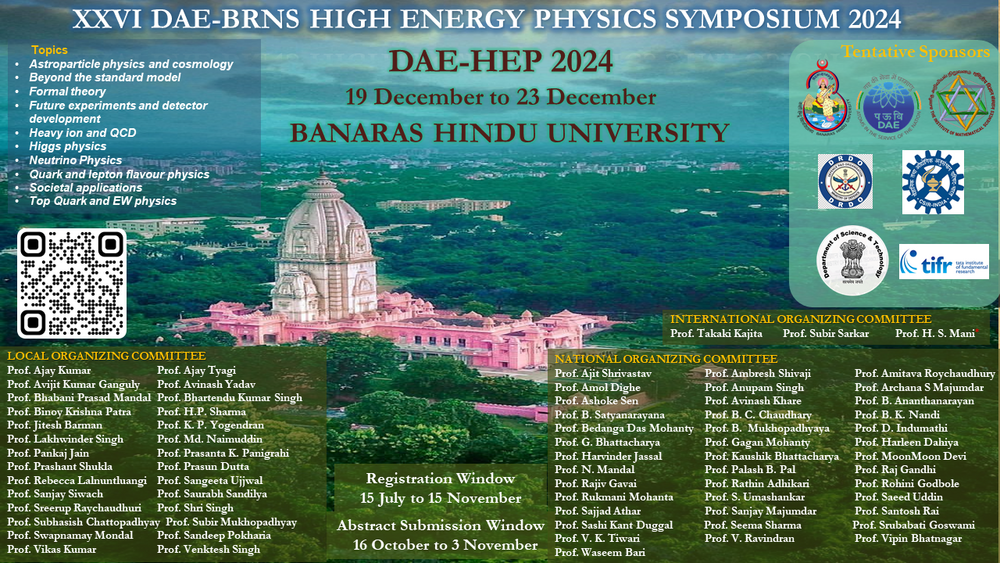Speaker
Description
Dark Matter (DM), assumed to be thermally produced in the early Universe, stayed in thermal equilibrium until the temperature of Universe dropped due to its expansion, leading to freeze out. Since the temperature was high at this time, the thermal contributions to relic density can be of crucial importance. Working with bino-like models of DM pertaining to WIMP paradigm, and assuming the freeze out to occur after the electroweak phase transition, we estimate the finite temperature corrections to DM annihilation cross-section at NLO, employing the generalized polarization rearrangement technique of Grammer and Yennie at finite temperature. The generalized thermal Feynman’s identities help us immensely to isolate the finite pieces; after a resummation of divergent terms. We initially begin with evaluating the thermal effects, in the regime in which the mediator is extremely heavy, followed by expanding the momentum into the next higher order; realizing that modes with high momenta are suppressed in a thermal theory. Followed by this, we proceed to estimate the thermal corrections in both non-relativistic (around freeze out) and relativistic limits. In both the cases, we find the leading thermal corrections to be quadratic, followed by sub-leading quartic corrections to the annihilation cross-section. Both the quadratic and quartic terms were found to be helicity suppressed when only the higher order virtual corrections are taken into account.
| Field of contribution | Theory |
|---|

